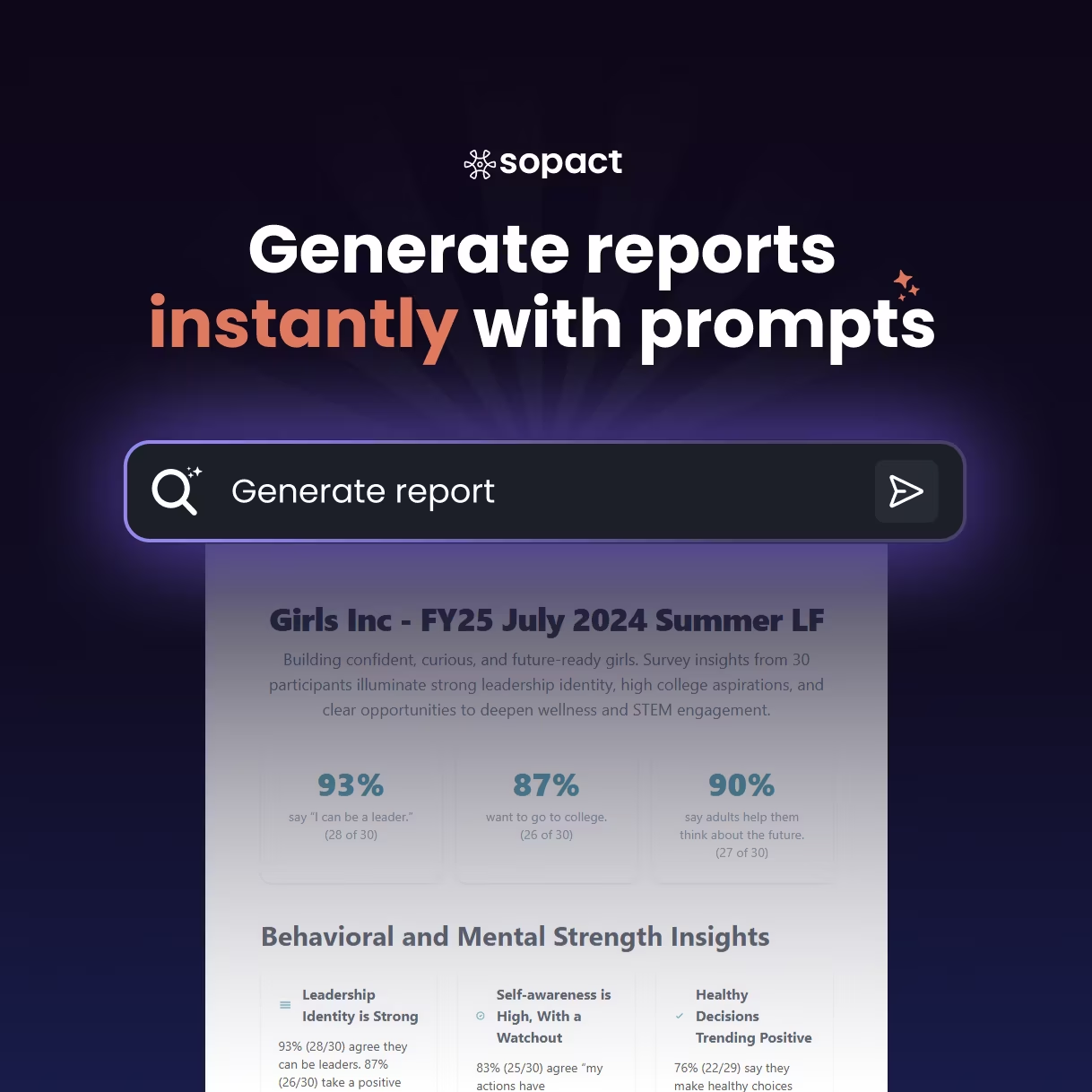Measuring What Matters: A Modern Guide to DEI Measurement
Organizations everywhere are talking about diversity, equity, and inclusion — but few can prove whether their efforts are actually working. DEI measurement is the missing link between intention and impact. It moves the conversation from aspirational statements to verifiable change, replacing assumptions with data and dashboards with learning.
To measure DEI effectively, leaders must look beyond headcounts or annual surveys. True measurement means capturing how diversity shows up across teams, how equitable decisions feel in practice, and whether inclusion translates into better outcomes for people and performance alike. This requires systems that track representation, experience, and results — the three dimensions of real inclusion.
A robust DEI measurement framework answers questions like:
- Are we hiring, promoting, and retaining people from underrepresented groups at equitable rates?
- Do employees across demographics feel respected, heard, and supported in their growth?
- Are our workplace policies and culture reducing barriers or reinforcing them?
Traditional HR metrics alone can’t capture that nuance. They show who’s in the room, but not whether everyone’s voice counts. That’s why modern organizations combine quantitative metrics (like promotion rates and pay equity) with qualitative insights (like belonging surveys and open-ended feedback). The shift is from compliance reporting to continuous learning — from counting people to understanding experiences.
For example, a company might report that 45% of its workforce identifies as female. That’s a representation metric — useful, but incomplete. DEI measurement goes deeper by asking:
- What percentage of women hold leadership roles?
- Do women’s engagement and retention rates match their male peers?
- What themes appear in exit interviews or pulse surveys about advancement?
Only when those layers connect does DEI data turn into actionable intelligence.
Quantitative DEI Measures
Quantitative measures are objective and data-driven. They reveal patterns, trends, and disparities that can be tracked over time and benchmarked against internal goals or industry standards.
These include:
- Workforce demographics: Representation of different groups across the organization, from entry-level to leadership.
- Hiring and recruitment: Diversity among applicants, hiring panels, and final hires.
- Promotion and retention: The rate at which employees from different groups advance or leave the organization.
- Pay equity: Compensation parity across gender, race, and other demographics.
- Training and development access: Who receives mentorship, learning budgets, or career advancement opportunities.
- Supplier diversity: The share of company spending directed toward diverse vendors.
For instance, a company might find that while 40% of new hires come from underrepresented groups, only 10% reach mid-management within five years. This quantitative gap signals a need for deeper analysis and intervention in advancement processes.
Qualitative DEI Measures
Qualitative measures bring life to the numbers by capturing experiences, emotions, and perceptions. They uncover why certain patterns exist and how employees actually feel within the organization.
These include:
- Employee surveys and sentiment analysis: How employees rate fairness, inclusion, and belonging.
- Focus groups and interviews: The lived experiences behind quantitative trends.
- Participation in DEI initiatives: Engagement levels in Employee Resource Groups (ERGs) and DEI events.
- Incident reports: The nature and frequency of discrimination or harassment cases.
- Sense of belonging: Whether employees feel valued, safe, and connected to their teams.
For example, a sentiment survey may show that employees of color report lower feelings of recognition despite equal pay. The quantitative data shows fairness; the qualitative data reveals the emotional gap. Real inclusion means bridging both.
Why Both Dimensions Matter
Numbers show what’s happening. Stories explain why. Together, they create accountability that no single metric can provide. Organizations that rely only on headcounts risk cosmetic diversity — visible representation without equitable experience. Conversely, those that depend solely on sentiment surveys lack measurable proof of improvement.
Balanced DEI measurement builds a multi-layered view of inclusion: representation that reflects fairness, experience that reflects belonging, and outcomes that reflect progress.
How to Use DEI Measures Effectively (a practical workflow)
Below is a simple, repeatable loop that turns your DEI data into decisions. It blends quantitative (rates, ratios, gaps) with qualitative (sentiment, belonging, lived experience) so each step builds on the last.
1) Assess & Benchmark (Month 0)
Goal: Establish a trustworthy baseline.
Quantitative: Representation by level, hiring & promotion rates, retention/attrition, pay-gap differentials, training access, supplier diversity %.
Qualitative: Belonging/fairness survey, ERG participation, interview/focus-group themes, incident categories.
Example KPI: “Female managers = 28% (target industry median 35%); pay gap (women vs men, same role/level) = -3.1%.”
Action: Create a single source of truth (role-level grid + protected attributes where lawful), document data quality rules.
Ownership & Cadence: People Analytics + HRBP; one-time setup, then quarterly refresh.
2) Set Goals & KPIs (Week 2)
Goal: Translate gaps into outcomes the business can own.
Quantitative KPIs: +5pp representation in L5+ roles; reduce regretted-loss rate gap to <1pp; close adjusted pay gap to ≤1%.
Qualitative KPIs: +8pt belonging score for underrepresented groups; ≥60% ERG participation in at least one event; ≥80% “fair process” agreement.
Example: “Promotion parity index ≥0.95 across groups by Q4.”
Action: Tie each KPI to an accountable leader and a review date.
Ownership & Cadence: CHRO + ELT; set annually, check quarterly.
3) Track Progress (Quarterly)
Goal: See movement early; prevent “annual surprise.”
Quantitative: Rolling 12-mo hiring/promotion funnels, offer-accept rates by group, pay-equity regression reruns, supplier diversity %.
Qualitative: Pulse surveys on recognition & psychological safety, anonymous feedback tags, ERG program NPS.
Example KPI: “Offer acceptance gap <2pp by group; belonging +3pts this quarter.”
Action: Use small multiples (per org/manager) to spot outliers; publish a brief internal dashboard note.
Ownership & Cadence: PA team + HRBP to business leaders; quarterly business reviews.
4) Develop & Test Strategies (Continuous)
Goal: Treat interventions like experiments.
Interventions: Structured interviews, diverse slates & panels, sponsorship programs, transparent promotion criteria, pay-equity adjustments, manager inclusion training, inclusive benefits, supplier outreach.
Measure Lift: A/B team pilots (e.g., structured interviews vs. business-as-usual) and compare promotion parity, pass-through rates, and survey lift.
Example KPI: “Structured interviews improve pass-through parity from 0.86 → 0.97 in 2 quarters.”
Action: Keep an “evidence log” linking each tactic to the metric it moved.
Ownership & Cadence: Program owners; 6–12 week pilot cycles.
5) Ensure Accountability & Communicate Impact (Quarterly/Annually)
Goal: Make DEI outcomes part of how leaders are evaluated.
Mechanisms: KPI roll-up in performance reviews, bonus modifiers (where appropriate), board/ELT scorecards, brief public report.
Example KPI: “All VPs maintain promotion parity index ≥0.95; any red status triggers plan within 30 days.”
Action: Share a simple before/after story: baseline → action → metric shift → next step.
Ownership & Cadence: ELT, Board, Comms; quarterly updates + annual summary.
- Assess & Benchmark: Build a clean baseline (rep, rates, pay, belonging).
- Set Goals & KPIs: Tie metrics to leaders and review dates.
- Track Progress: Monitor funnels & sentiment quarterly; flag outliers.
- Develop & Test: Pilot tactics; measure lift in parity and belonging.
- Accountability: Report results, adjust, and link to performance.
How to Use DEI Measures Effectively
1. Assess & Benchmark
Gather baseline DEI data — demographics, pay, representation, and belonging. Use a DEI assessment to score maturity across governance, data quality, and leadership accountability.
2. Set Goals & KPIs
Translate gaps into measurable targets: promotion parity ≥ 0.95, pay gap ≤ 1%, belonging index +5 points.
3. Track Progress
Monitor DEI metrics quarterly using unified dashboards. Blend headcount data with DEI surveys to detect disparities early.
4. Develop & Test Strategies
Pilot new inclusion programs, diverse hiring panels, or pay adjustments. Use DEI analytics to see which interventions work.
5. Report & Share Accountability
Build transparent DEI reporting so leaders, boards, and employees can see progress. Quarterly scorecards reinforce ownership and trust.
DEI Reporting, Data & Analytics
DEI reporting turns measurement into communication. It summarizes diversity metrics, inclusion metrics, and equity outcomes in a transparent, accessible format.
Strong reporting draws on unified DEI data pipelines, blending HR systems, surveys, and incident logs into one continuous feed.
DEI analytics elevate reporting from static summaries to insight. They correlate metrics — for example, showing how psychological safety (survey data) affects retention (HR data).
Finally, DEI assessment rounds out the cycle. It benchmarks your progress against best practices and shows what to prioritize next — from leadership training to data governance.
Turning Data into Continuous Learning
The best DEI strategies are not defined by how much data they collect but by how often they learn from it.
By uniting DEI reporting, DEI surveys, and DEI analytics, organizations can see change as it happens — and adjust faster.
DEI measurement should feel less like a compliance ritual and more like a cultural conversation informed by evidence.
Frequently Asked Questions
Quick, practical answers about DEI measurement, reporting, surveys, and analytics.
1How do DEI surveys differ from engagement surveys?
Engagement surveys gauge motivation and satisfaction, while DEI surveys test fairness, belonging, and psychological safety across groups. They use identity-aware cuts and open-text analysis to uncover inequities traditional engagement tools miss.
2How often should DEI reporting occur?
Quarterly is ideal for accountability and course-correction, with an annual roll-up for boards. Quarterly DEI reporting pairs KPIs (representation, pay equity, promotion parity) with a short narrative on actions taken.
3What’s the difference between DEI metrics and inclusion metrics?
DEI metrics quantify structure (diversity, equity, outcomes). Inclusion metrics capture culture (belonging, respect, psychological safety). You need both to see not just who is present but who is heard and growing.
4How can DEI analytics predict retention risk?
By correlating sentiment trends from DEI surveys with movement data (promotions, exits), analytics can flag teams where belonging dips precede higher attrition, enabling targeted interventions before turnover spikes.
5What does a DEI assessment include?
A structured review of governance, data quality, leadership accountability, and outcomes. It benchmarks maturity, identifies gaps (e.g., pay analysis cadence, representation goals), and sequences next-step priorities.








Frequently Asked Questions
Quick, practical answers about DEI measurement, reporting, surveys, and analytics.
1How do DEI surveys differ from engagement surveys?
Engagement surveys gauge motivation and satisfaction, while DEI surveys test fairness, belonging, and psychological safety across groups. They use identity-aware cuts and open-text analysis to uncover inequities traditional engagement tools miss.
2How often should DEI reporting occur?
Quarterly is ideal for accountability and course-correction, with an annual roll-up for boards. Quarterly DEI reporting pairs KPIs (representation, pay equity, promotion parity) with a short narrative on actions taken.
3What’s the difference between DEI metrics and inclusion metrics?
DEI metrics quantify structure (diversity, equity, outcomes). Inclusion metrics capture culture (belonging, respect, psychological safety). You need both to see not just who is present but who is heard and growing.
4How can DEI analytics predict retention risk?
By correlating sentiment trends from DEI surveys with movement data (promotions, exits), analytics can flag teams where belonging dips precede higher attrition, enabling targeted interventions before turnover spikes.
5What does a DEI assessment include?
A structured review of governance, data quality, leadership accountability, and outcomes. It benchmarks maturity, identifies gaps (e.g., pay analysis cadence, representation goals), and sequences next-step priorities.